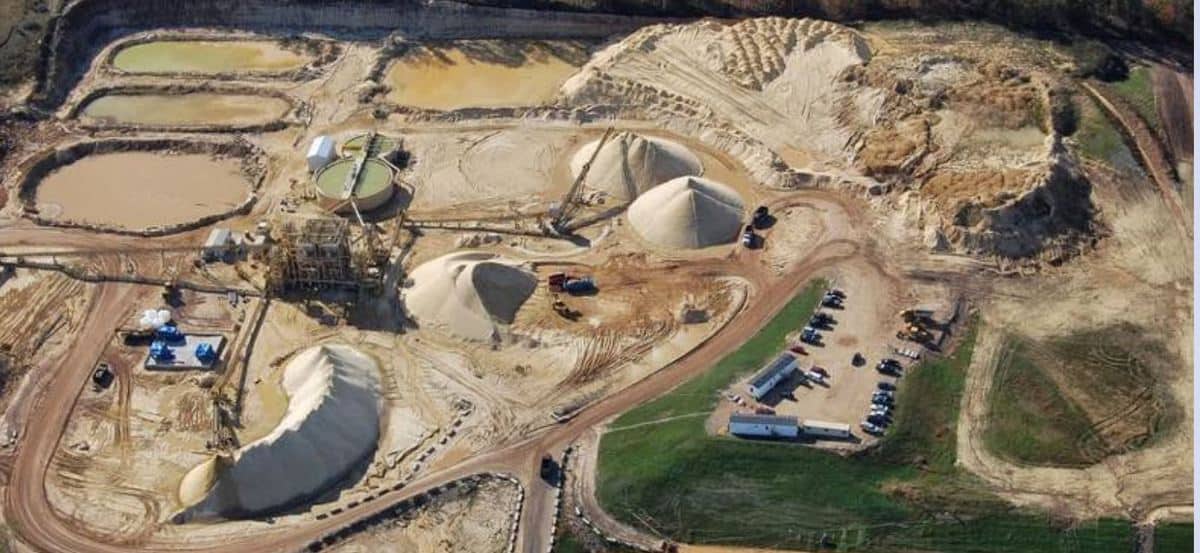Frac Sand LOGISTISCS
Frac Sand SUPPLY: FRAC SAND COMPANIES in the permian basin Navigating Efficiency and Sustainability
Introduction
In the realm of energy extraction, the efficient management of frac sand plays a pivotal role in enhancing operational effectiveness and environmental stewardship. This content page delves into the intricate landscape of frac sand logistics, focusing on key elements such as sourcing, transportation, and sustainability.
Frac Sand Logistics: Navigating Efficiency and Sustainability
- The Importance of Frac Sand Logistics: Frac sand logistics ensures the timely and reliable delivery of sand to hydraulic fracturing sites, facilitating the extraction of oil and gas. It involves coordinating various stages, from sourcing to delivery, to ensure uninterrupted operations.
- Challenges in Frac Sand Logistics: Challenges in frac sand logistics include transportation bottlenecks, unpredictable demand fluctuations, and regulatory compliance. Addressing these challenges requires proactive planning and innovative solutions.
- Strategies for Efficient Frac Sand Logistics: Strategies for efficient frac sand logistics include leveraging technology for real-time tracking, optimizing transportation routes to reduce costs, and utilizing onsite sand operation services that enhance coordination and minimize supply chain disruptions.

Losing your keys can be inconvenient;
Sand on frac job shouldn’t be!
The Role of Frac Sand Companies in Supplying and Managing Wet Sand
- Sourcing and Extraction: Frac sand companies engage in sourcing and extraction operations, often located near natural deposits. Advanced extraction techniques and sustainable mining practices are employed to ensure a steady supply of high-quality sand.
- Transportation and Storage: Transportation and storage are critical components of frac sand logistics. Frac sand companies utilize various modes of transport, including rail and trucking, and invest in storage facilities equipped with state-of-the-art inventory management systems to maintain product integrity.
- Processing and Distribution: Upon extraction, wet sand undergoes processing to remove impurities and meet industry specifications. Frac sand companies oversee the processing and distribution processes, ensuring timely delivery to fracing sites while adhering to quality standards.
Frac Sand Logistic Owner-Operators: Streamlining Operations for Lower Costs
- Ownership and Operation Models: Frac sand owner-operators may opt for different ownership and operation models, including vertically integrated operations or partnerships with third-party logistics providers. Each model has its unique advantages and challenges in terms of cost management and operational efficiency.
- Innovative Technologies and Practices: Owner-operators leverage innovative technologies such as IoT-enabled sensors and predictive analytics to optimize operations. Automation of key processes, such as sand loading and unloading, helps streamline workflows and reduce labor costs.
- Cost Reduction Strategies: Cost reduction strategies adopted by frac sand logistic owner-operators include bulk purchasing to leverage economies of scale, optimizing equipment utilization rates, and implementing proactive maintenance schedules to minimize downtime and repair costs.

Frac Sand: Meeting Demand with Efficiency
- Frac Sand Operations: Sand operations play a pivotal role in meeting the growing demand for frac sand. These operations involve the efficient sourcing, transportation, and delivery of sand to frac sites, often utilizing specialized equipment and logistics networks.
- Market Dynamics and Demand Forecasting: Frac sand operations rely on accurate demand forecasting to optimize resource allocation and inventory management. Market dynamics, including oil and gas prices and drilling activity, influence demand fluctuations and strategic decision-making.
- Efficiency Measures in Frac Sand: Efficiency measures implemented by frac sand operations encompass route optimization, fleet management, and load consolidation to minimize transportation costs and reduce delivery lead times. Continuous improvement initiatives focus on enhancing operational efficiency and customer satisfaction.
The Environmental Imperative: Reducing Silica Emissions in Sand Logistics
- Understanding Silica Emissions: Silica emissions pose significant health and environmental risks, particularly during sand handling and transportation activities. Understanding the sources and factors contributing to silica emissions is crucial for implementing effective mitigation measures.
- Environmental Regulations and Compliance: Regulatory agencies impose stringent regulations to limit silica emissions and protect public health and the environment. Frac sand logistics stakeholders must ensure compliance with these regulations through emission monitoring, dust suppression measures, and employee training programs.
- Sustainable Practices in Silica Emission Reduction: Sustainable practices adopted to reduce silica emissions include the use of enclosed conveyance systems, water-based dust suppression agents, and automation of material handling processes. Investing in innovative technologies and adopting best practices contribute to minimizing environmental impact and promoting sustainability in sand logistics.
Conclusion: Advancing Frac Sand Logistics Towards Sustainability
In conclusion, efficient and sustainable frac sand logistics are imperative for supporting the energy industry’s growth while minimizing environmental impact and ensuring operational resilience. By embracing innovative technologies, implementing best practices, and adhering to regulatory requirements, stakeholders can advance frac sand logistics towards a more sustainable and resilient future.
Testimonial
We are Results Driven.
“It’s what you learn after you know it all that really counts.”
Contact Us
